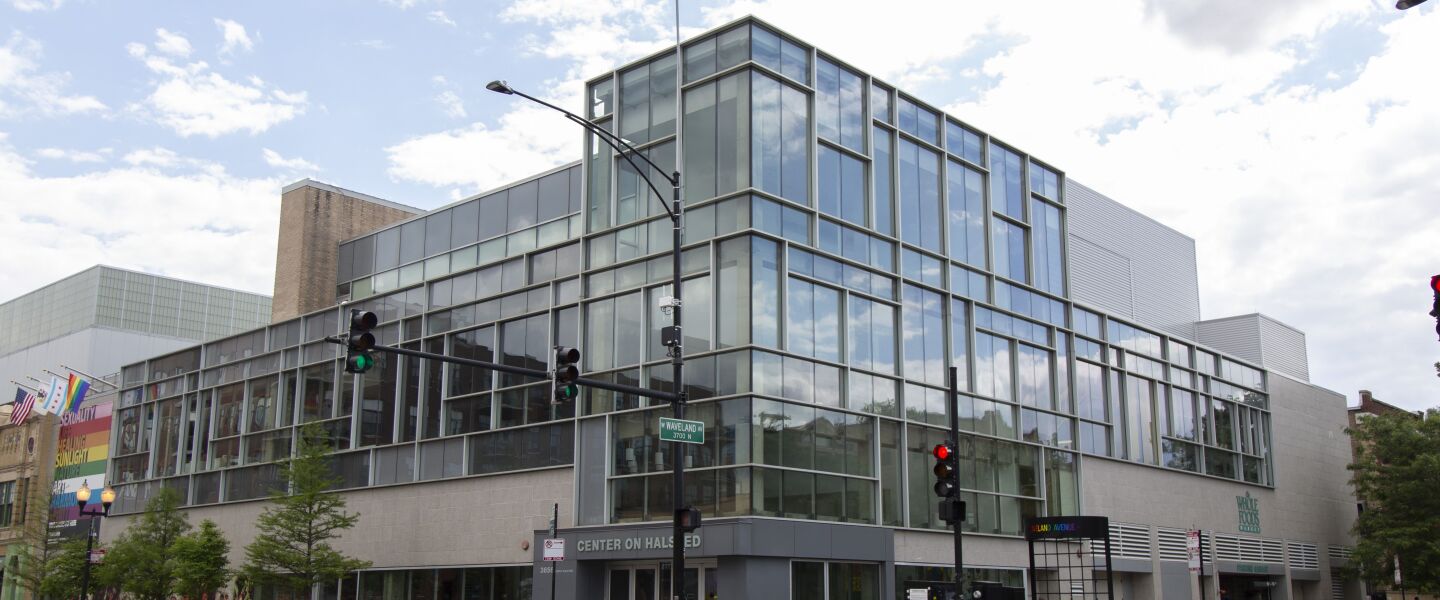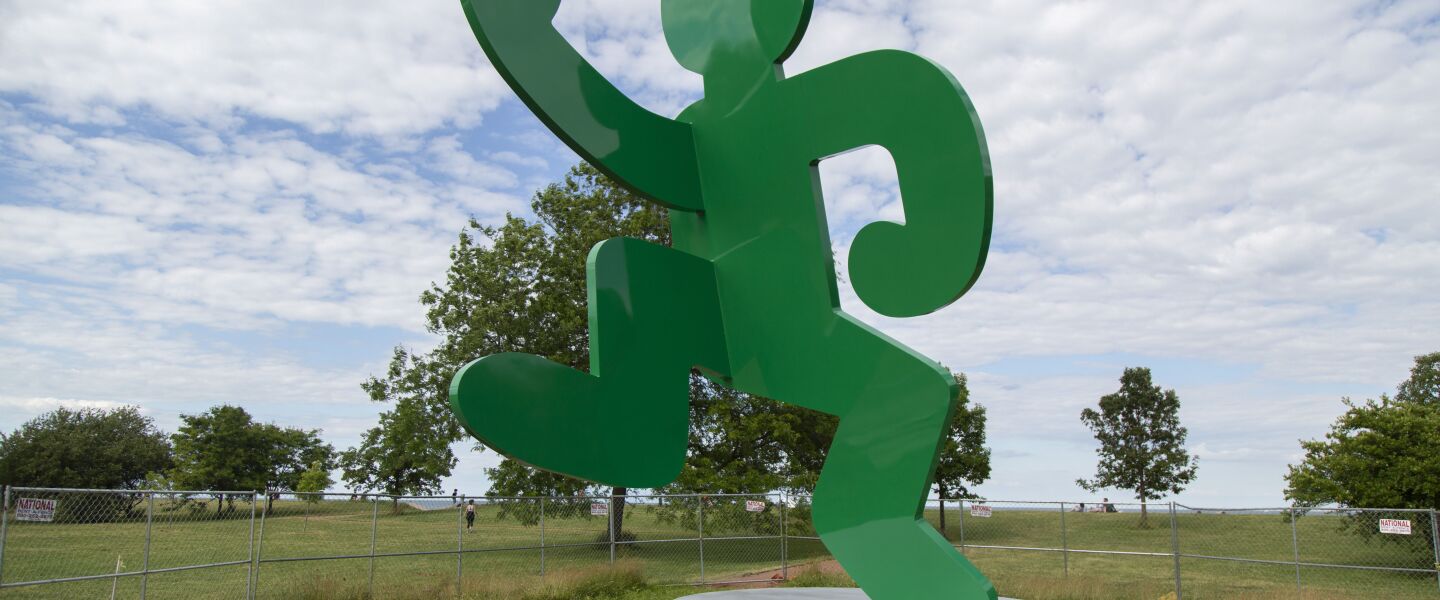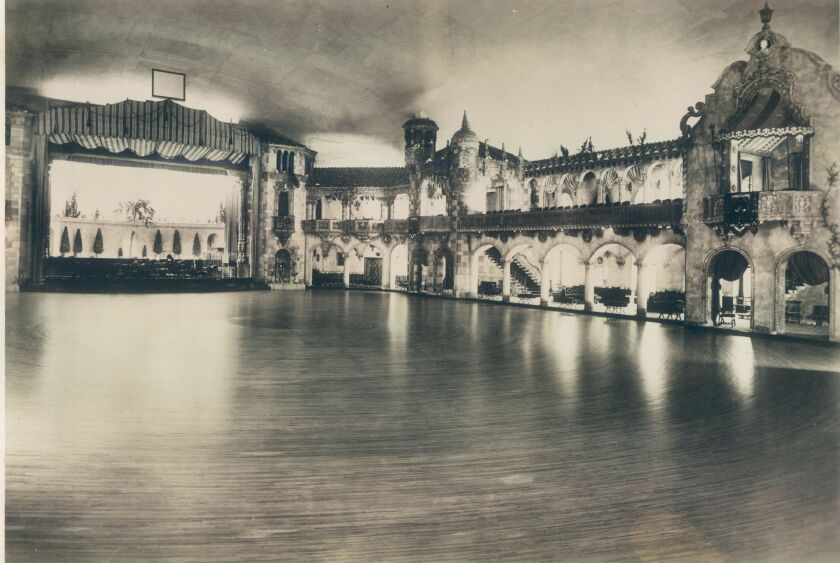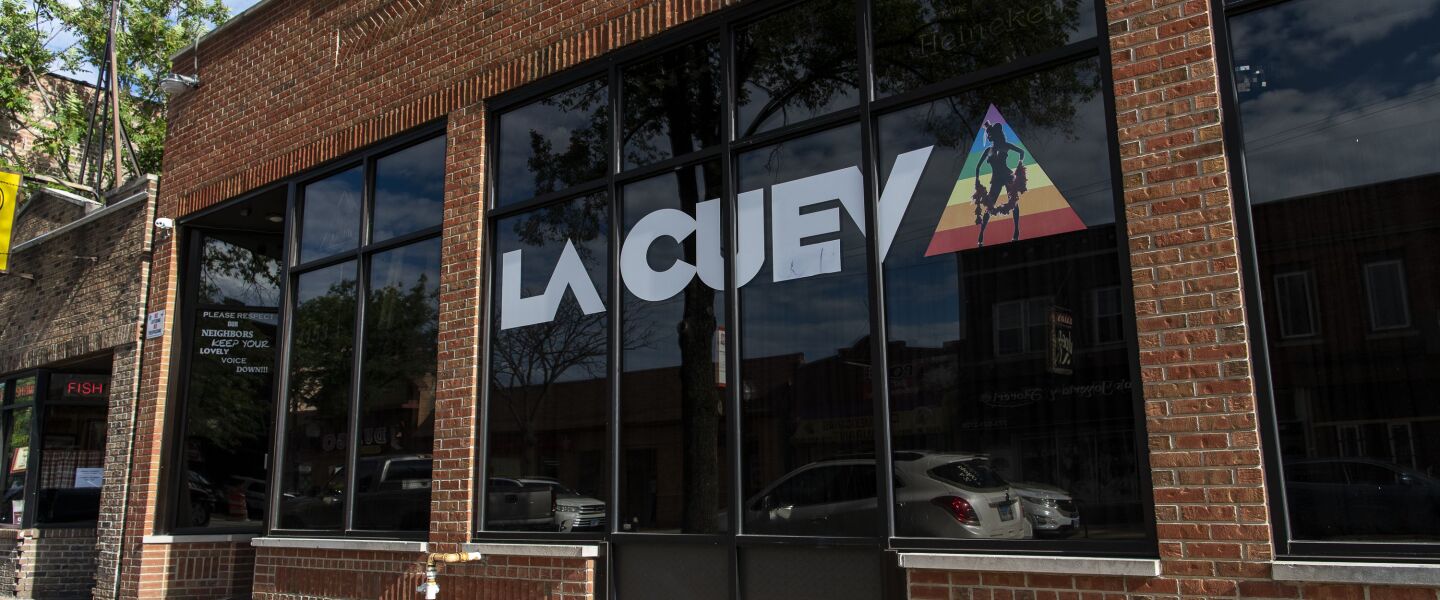There’s a rich queer history that includes hosting what’s believed to be the nation’s first pride parade (in June 1970), passing a pioneering human rights ordinance in 1988 offering protections from discrimination, and electing Lori Lightfoot in 2018 as the city’s first LGBTQ+ mayor.
There was no Chicago Pride Parade in 2020 because of the coronavirus pandemic. So at the time, we put together this list to highlight some key places and moments in the city’s LGBTQ+ life and history. Even though there’s a parade this year, you can still take the self-guided tour.
Bughouse Square
901 N. Clark St.
The grassy area of what’s technically Washington Square Park has long been known as Bughouse Square and as a tourist destination because of its history as a center for public debate.
In the LGBTQ+ community, Bughouse Square also was known as a popular cruising area and hook-up site and, as the community grew, somewhere queer people could go and realize they weren’t alone, according to Owen Keehnen, a Chicago LGBTQ+ historian.
“People were shocked that there were this many gay people in the world,” Keehnen says. “They might have grown up thinking they were the only one, only to realize, ‘I guess I’m not.’”
Bughouse Square also holds another distinction in gay history. It’s where the nation’s first pride parade began — on June 27, 1970.
The march marked the first anniversary of New York City’s 1969 Stonewall riots, the uprising that followed a police raid on the gay club the Stonewall Inn and became a catalyst for the gay rights movement.
New York’s own parade — the Christopher Street Liberation Day march, marking the same anniversary — was held June 28, 1970, a day after Chicago’s march, according to Devlyn Camp, producer of the podcast “A Queer Serial.”
The Picasso
50 W. Washington St.
Located downtown at Daley Plaza, the untitled Picasso sculpture, unveiled in 1967, is the site of a landmark moment in LGBTQ+ history: the end of that first pride march in 1970.
People marched from Bughouse Square to the Picasso at what was then called the Civic Center Plaza.
Albert Williams, a Columbia College Chicago professor and former editor of the Windy City Times LGBTQ+ newspaper, was there and says the march ended with a circle dance at the Picasso.
The Legacy Walk
3245-3704 N. Halsted St.
The Legacy Walk outdoor walking museum stretches just over a half a mile on Halsted Street, between Belmont Avenue and Grace Street, in the largely LGBTQ+ Lake View neighborhood known as Northhalsted. (Note: The neighborhood officially dropped the name Boystown and adopted Northhalsted in September 2020.)
The city declared it a historic landmark last year.
It’s marked by rainbow-colored pylons standing 25 feet tall that line both sides of Halsted. Each pylon features a pair of figures and events key to the LGBTQ+ rights movement, among them writers James Baldwin and Walt Whitman and the Stonewall riots.
“Grade-school kids are brought in and go down it,” says Rick Garcia, a longtime activist who lives in Edgewater. “It shows gay people throughout history who made significant contributions. Seeing that draws people from all over the country.”
Center on Halsted
3656 N. Halsted St.
After visiting the Legacy Walk, you can stop by the Center on Halsted, an LGBTQ+ community center at 3656 N. Halsted St. that opened in 2007.
The center provides social services and community programs including HIV testing, group therapy, workshops and meals for people over 55 and vocational development help.
Northalsted
East Lake View
A hub of gay-owned businesses and bustling nightlife, the heavily LGBTQ+ North Side neighborhood known as Northalsted received the city’s official designation as a gay village in 1997.
Running generally from the lake to west of Clark Street between Irving Park Road and Diversey Avenue, it’s where you can find some of the oldest and best-known gay bars in Chicago.
Among them are a pair of longstanding nightlife handouts: Roscoe’s Tavern, 3356 N. Halsted St., and Sidetrack Chicago, 3349 N. Halsted St.
Since the early days of Northalsted, the bars and nightlife that can be found along Halsted Street and nearby have been a magnet for LGBTQ+ people, according to Keehnen.
“Bars are so important,” he says. “It’s not just to drink and pick people up. They were simply so important because, if there isn’t a place for community to happen, community doesn’t happen.”
AIDS Garden
3003 N. Lakefront Trail
The Belmont Rocks lining the lakefront between Diversey Harbor and Belmont Harbor were a place for forging and solidifying friendships in the LGBTQ+ community, says Keehnen, 60, who lives in Rogers Park. From sun-tanning to having picnic lunches, the limestone blocks offered a safe place for queer Chicagoans to congregate.
In 2003, the city paved over the Belmont Rocks, and Keehnen posted on Facebook bemoaning this loss. Ald. Tom Tunney (44th), who is gay, paid notice. So did the Chicago Park District. As a result, Keehnen and others helped envision an AIDS Garden to be built where the Belmont Rocks were.
It so far includes “Self-Portrait,” a green sculpture, standing 30 feet tall, created by artist and AIDS activist Keith Haring of a man that’s visible from Lake Shore Drive. Landscaping still needs to be done, and the garden is expected to be fully open sometime in the fall, according to Keehnen, who works as a historian for the project.
The garden also will include a walkway with a chronology of the AIDS epidemic in Chicago.
Keehnen says it’s “not a memorial garden. It’s to celebrate not only the lives that were lost, but also those that survived and the coming together of a community to endure the disease.”
Women & Children First
5233 N. Clark St.
Women & Children First started as a feminist bookstore founded to address a scarcity of feminist literature in Chicago, according to co-founder Linda Bubon, and “really evolved in an organic kind of way” into a store that caters to the LGBTQ+ community that developed in Andersonville in the 1990s.
Some who live there since the 1990s credit the bookshop with helping Andersonville grow into the city’s best-known lesbian community, known as Girlstown.
The store has held memorial services and lesbian showers and in recent years also worked to deepen its ties with the transgender community.
Leather Archives & Museum
6418 N. Greenview Ave.
The Leather Archives & Museum, founded by gay business people Chuck Renslow and Tony DeBlase, celebrates the leather and bondage subculture. Rather than present the subculture as taboo, it offers exhibitions that include bondage gear and also literature and art that the owners say shows the subculture as a movement integral to the LGBTQ+ community.
Aragon Ballroom
1106 W. Lawrence Ave.
The Aragon Ballroom, a music venue that dates to 1926, has long hosted pop music concerts and, in 1977 and 1978, was the venue for Orange Balls and other LGBTQ+ fundraisers.
The Orange Balls, held by gay activists including Renslow, were held to protest singer Anita Bryant’s anti-gay Save Our Children campaign. In response, gay activists held the Orange Balls.
Medinah Temple
600 N. Wabash Ave.
Medinah Temple, an Islamic Revival-style building, originally was a 4,200-seat auditorium and now is a Macy’s store. In 1977, it was the site of a protest against Bryant and her anti-gay coalition.
When Bryant came to Chicago to perform at the Shriners Hospital for Children, gay and lesbian protesters marched in a circle around Medinah Temple, holding signs that read “God drinks wine, not orange juice”— a reference to Bryant’s orange juice commercials — and “Anita is McCarthy in drag,” according to historian John D’Emilio.
Henry Gerber House
1710 N. Crilly Ct.
The Henry Gerber House is one in a row of protected landmark Queen Anne-style houses in Old Town. Granted that status by the city in 2001, it’s where Henry Gerber secretly organized the nation’s first gay emancipation group.
It was designated a national historic landmark in 2015 — the second in the nation, after the Stonewall Inn, to get that designation because of its significance in LGBTQ+ history.
Gerber, a Bavarian immigrant lauded as the grandfather of the American gay movement, created the group in 1924 and named it the Society for Human Rights in an effort to organize gays nationwide. But the group was short-lived. In 1925, the police raided Gerber’s house, arrested him and shut down the society.
Even though the legal case against Gerber ultimately was dismissed, it cost Gerber his $600 life savings and his job at the post office for “conduct unbecoming a postal worker.”
Remembering Gerber, in Camp’s eyes, is a way to commemorate LGBTQ+ ancestors.
Gerber/Hart Library and Archives
6500 N. Clark St.
Just north of Devon Avenue, the Gerber/Hart Library and Archives is named for Gerber and Pearl Hart, who fought against police violence toward gays. The library focuses on LGBTQ+ history from Chicago and the Midwest and hosts lectures, workshops and classes.
Chicago Coliseum
1513 S. Wabash Ave.
Chicago’s three coliseums, no longer in existence, were indoor arenas used for sports and exhibitions— and, from the 1930s, drag balls and gay dances.
The city’s third coliseum, on South Wabash Avenue, hosted drag balls in the 1930s that drew diverse crowds and eventually were sponsored by African American business owners, according to historian Tristan Cabello.
Later, the same coliseum was where Chicago’s first public gay dance, in the 1960s, was held by Chicago’s Gay Liberation Front. The organization had hosted dances twice before at the University of Chicago but got kicked off the university’s campus for violating dance attendance limits and moved to the coliseum, making the dance public. A Black insurance broker insured the dance at the Chicago Coliseum after other agents refused to do so for fear of police raids.
You still can see a trace of the third coliseum in the form of Coliseum Park, facing its former site, now a lay Buddhist building. The park’s stone and metal pavilion is reminiscent of the third coliseum’s castle-style turrets and crenellations.
Jane Addams Hull-House Museum
800 S. Halsted St.
Jane Addams, who won the Nobel Peace Prize in 1931, founded Hull-House, Chicago’s first settlement, on the Near West Side in 1889. These places, which originated in London in the 1880s, provided social services and aimed to help address social problems that arose amid urbanization, immigration and industrialization.
What Chicagoans might not know about Addams is that she had a relationship with a woman, Mary Rozet Smith, for 40 years. She was inducted posthumously into the Chicago LGBT Hall of Fame in 2008.
From the late 1800s to early 1900s, a group of residents at the Hull-House — Addams included — provided education and day care to children of working mothers and English and citizenship classes to immigrants. The house now is a museum commemorating Addams’ work.
Jeffery Pub
7041 S. Jeffery Blvd.
Jeffery Pub is one of the oldest gay bars in the city and the country and, according to owner Jamal Junior, the only African American-owned LGBTQ+ bar in Chicago.
With much of Chicago’s LGBTQ+ hub concentrated on the North Side, Jeffery Pub often was seen as a refuge for people from South Shore or the south suburbs.
“We’re 100% open for everyone to come in,” Junior says. “But when there were issues on the North Side, African American communities were always able to have a safe home on the South Side at Jeffery Pub.”
La Cueva
4153 W. 26th St.
It’s a myth that the Latino community is reluctant to accept LGBTQ+ people, according Garcia, the longtime activist. And La Cueva nightclub in Little Village offers testament to that. It hosts drag shows and other entertainment, Garcia says, and is a hub of LGBTQ+ nightlife.
Finnie’s Balls
38th Street and Michigan Avenue
In 1935, the basement of a tavern at 38th Street and Michigan Avenue hosted the first of what were called Finnie’s Balls — a series of drag balls created by Black gay gambler and street hustler Alfred Finnie.
Guests paid a quarter to enter the first gathering, which was a small affair compared to the lavish event it later became.
In the early days, the balls provided gay and lesbian people with the opportunity to socialize publicly in an intimate setting. They were held about five times a year at various locations until 1943, when Finnie was killed in a gambling brawl.
(Editor’s note: A version of this story was originally published in June 2020.)





















